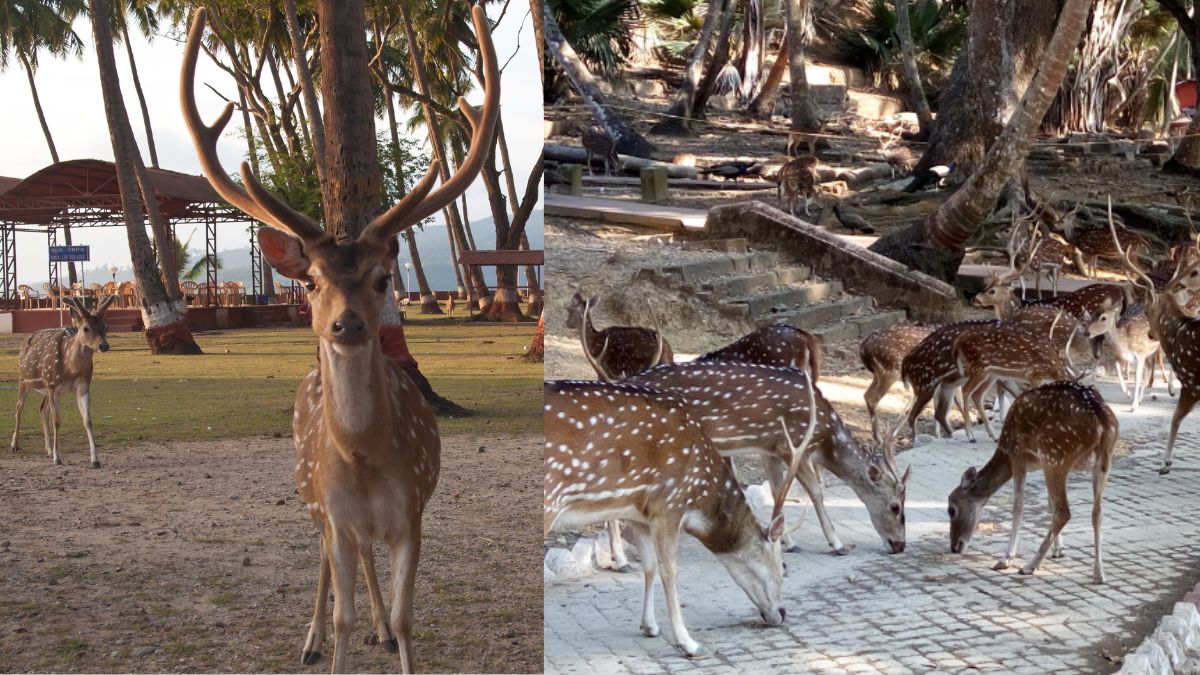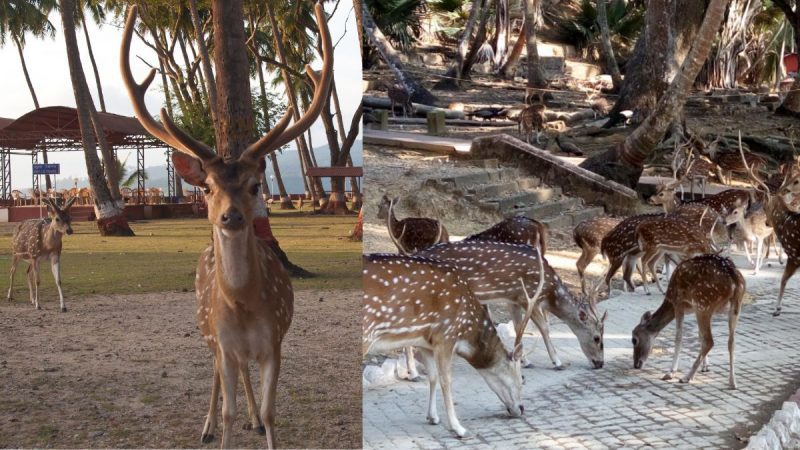An island full of Chital Deer? Yes, Ross Island, a part of the Andaman and Nicobar archipelago, holds fascinating aspects. This island is full of presence of chital deer, also known as spotted deer while it is known for its picturesque beauty and historical significance.
A Deer Island In The Andamans
Today, Ross Island is a popular tourist destination. The remnants of British colonial architecture, combined with the island’s natural beauty, attract visitors from around the world. The presence of chital deer adds to the island’s charm, making it a unique spot for wildlife observation. Although the chital deer is native to the Indian subcontinent, the British introduced them to Ross Island during their colonisation period. The introduction of chital deer was intended to enhance the island’s charm and provide a familiar game animal for hunting purposes. Chital deer are medium-sized herbivores. They are easily recognisable by their reddish-brown coat adorned with white spots and a distinctive white underbelly.
The deer population on the island is especially well-known. They graze freely among the ruins, creating an eerie contrast with the ancient setting. Their presence adds a unique element to the island’s biodiversity, providing a picturesque sight for tourists and enhancing the island’s wildlife appeal.
Ecologists and wildlife biologists have researched the effects of the invasive chital on the local flora and fauna over time. Invasive species are non-native plants and animals that threaten local species with extinction. Additionally, they disrupt the local habitats’ ecosystems by preying on and vying for resources.
Apart from chital deer, Ross Island hosts a variety of other wildlife, including different species of birds, butterflies, and smaller mammals. The island’s vegetation includes tropical and subtropical plants, with dense forests that provide a habitat for diverse fauna. The interplay between the historical ruins and the encroaching forest creates a unique setting.
What’s More At Ross Island?
Ross Island in #Andamans holds much more than its obvious beauty. This historically significant island was once the headquarters of the British colony and today, holds ruins of large colonial structures. https://t.co/LYBXlv5xve #IncredibleIndia pic.twitter.com/5FdksxlWFm
— Incredible!ndia (@incredibleindia) April 25, 2019
Ross Island is easily accessible from Port Blair, with regular ferry services transporting visitors to and from the island. The island’s small size makes it easy to explore on foot, with well-marked trails leading to various points of interest. The ruins of colonial buildings offer a glimpse into the island’s storied past.
Ross Island is home to several sights and attractions that highlight both its natural and historical beauty. The fascinating view of the island’s colonial past is provided by the Ross Island Museum. Japanese forces captured Ross Island during World War II. As a reminder of the island’s past during the war, you may still find the ruins of Japanese bunkers, artillery emplacements, and other war-related buildings.
While these deer enhance the island’s charm, their presence also necessitates careful ecological management. Have you travelled to Ross Island yet?
Cover image credits: Wikimedia Commons
First Published: June 14, 2024 8:18 PM




